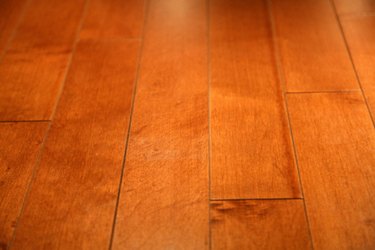Things You'll Need
Thermometer
Hygrometer
Lacquer
Lacquer blush retarder
Mixing stick
Pan
Brush

Lacquer is a durable finish that you place over wood products to both beautify and protect them. Lacquer comes mixed with solvent in a liquid form, but when you apply the lacquer to the wood, the solvents evaporate, leaving just lacquer to harden. If you apply the lacquer in the wrong environment, moisture can get trapped inside the lacquer when it hardens, leaving a cloudy complexion on the wood. To correct the issue, you need to liquefy the cloudy lacquer in the correct environment, letting the moisture evaporate out into the air or be absorbed into the wood.
Step 1
Wait until you find a day where the temperature is above 65 degrees Fahrenheit and the relative humidity is below 65 percent. Use your thermometer and hygrometer to get these measurements. You can also manipulate the temperature or humidity in a house or room to meet these requirements.
Video of the Day
Step 2
Let the wood surface sit in this area for an entire day. Sometimes, the change to a non-humid environment will result in the cloudiness fading.
Step 3
Combine 9 parts lacquer and 1 part lacquer blush retarder in a container or pan, and mix them together.
Step 4
Apply the solution to the wood surface using your brush. Only apply a thin coat of the solution to the area with the cloudiness. If the entire surface is cloudy, start bushing in the center of the area and move your strokes to the outside of the wood.
Step 5
Wait one day for the lacquer to completely dry and the moisture to evaporate. If the cloudiness remains, repeat the process using 3 parts lacquer and 1 part lacquer blush retarder. If after a day the cloudiness remains, buff out the entire area with 0000 steel wool and apply the same mixture of lacquer and retarder.
Video of the Day